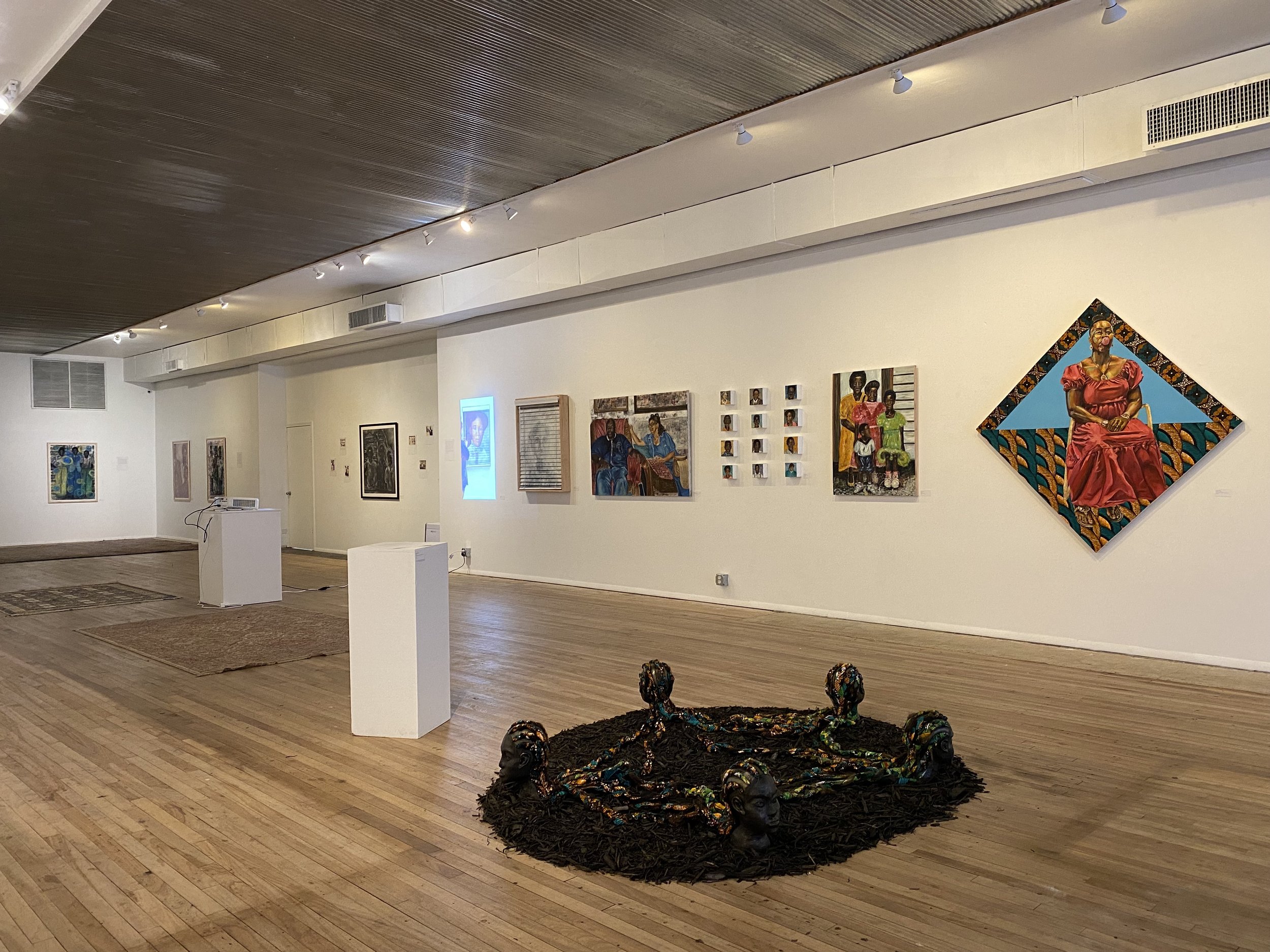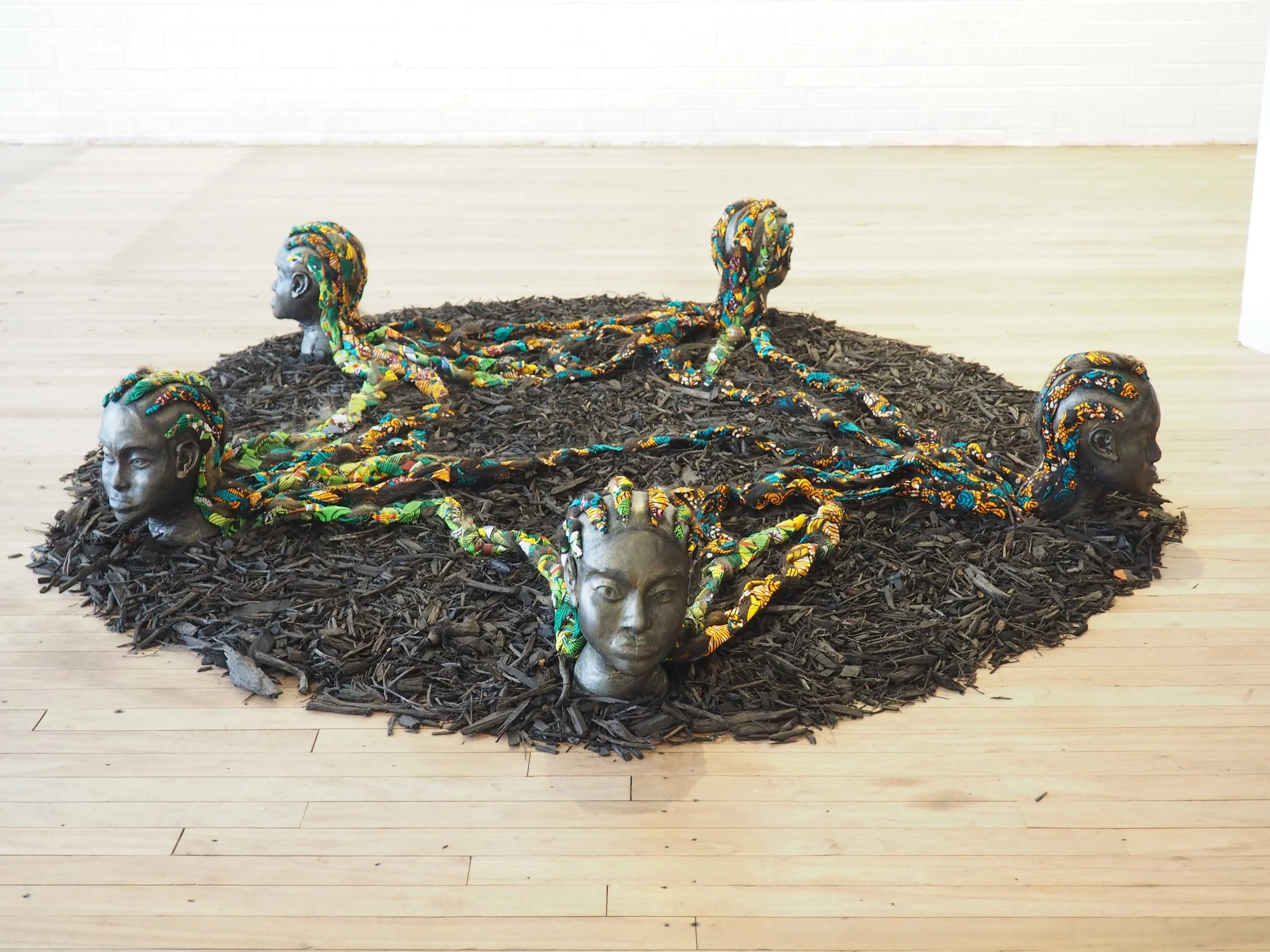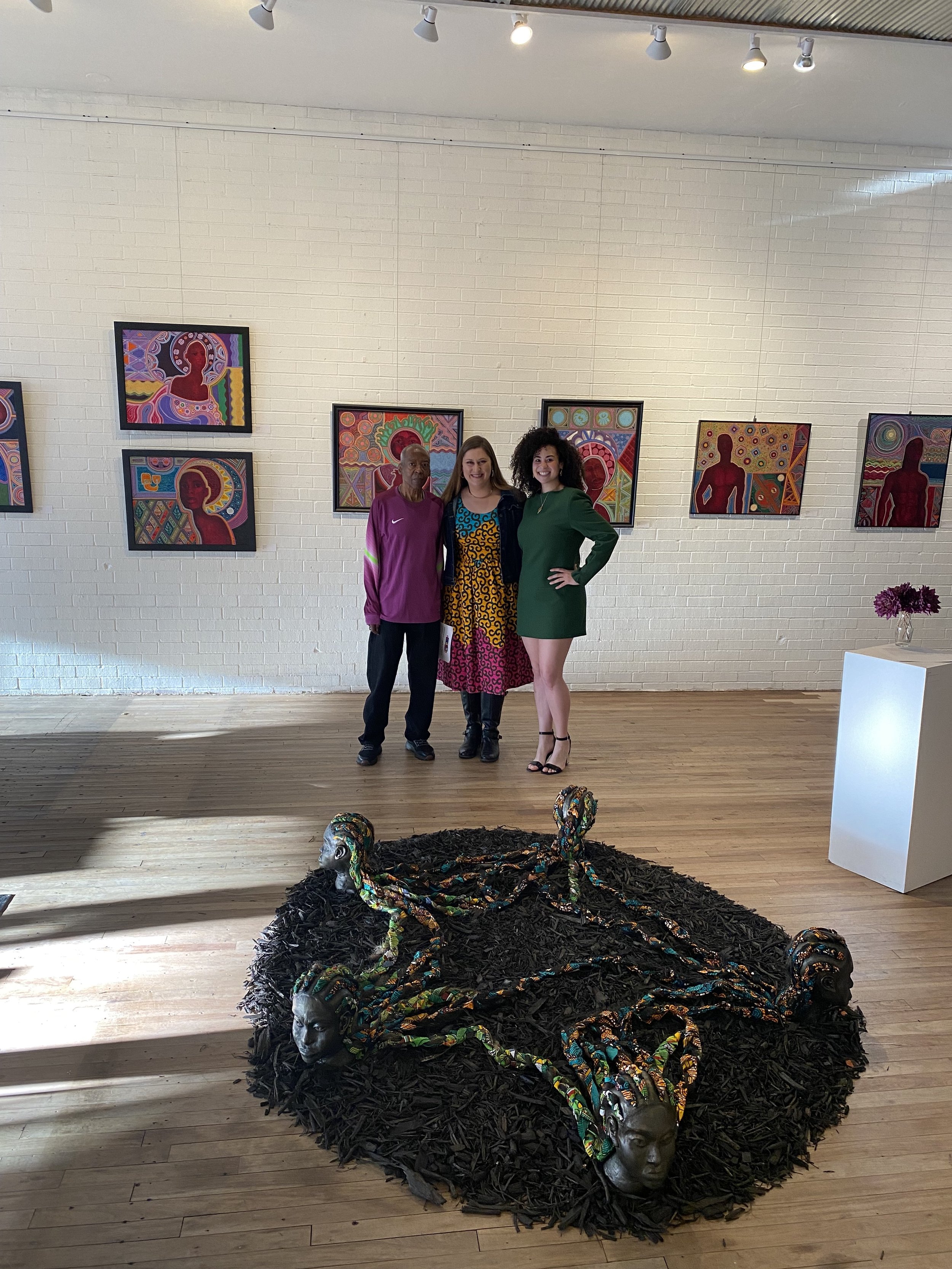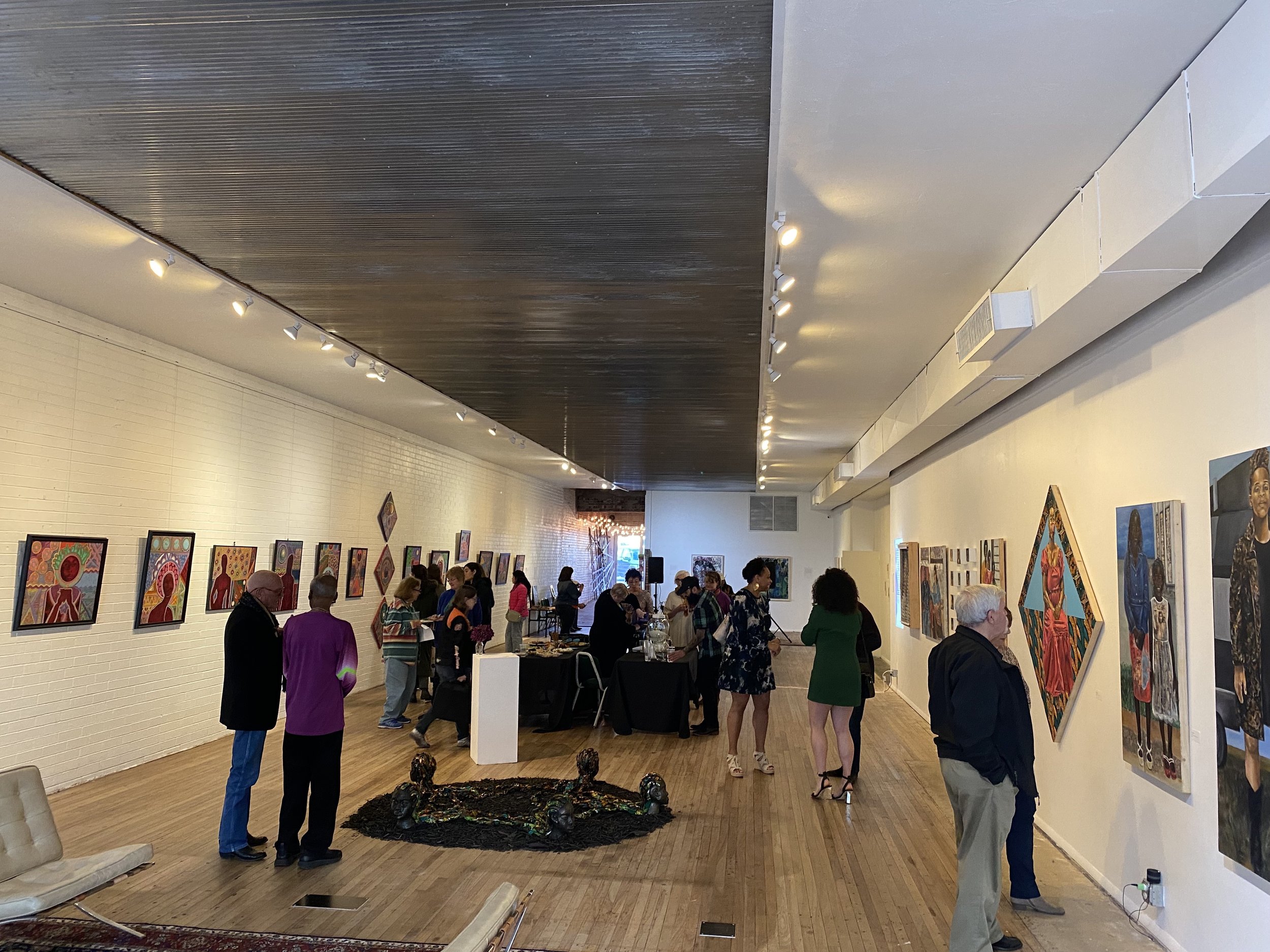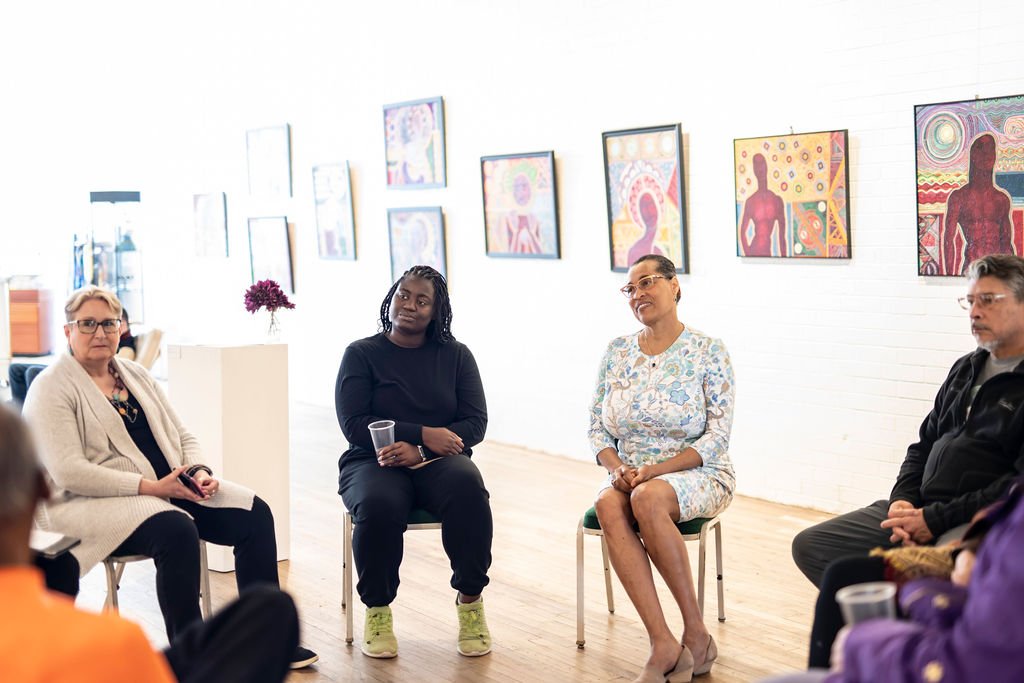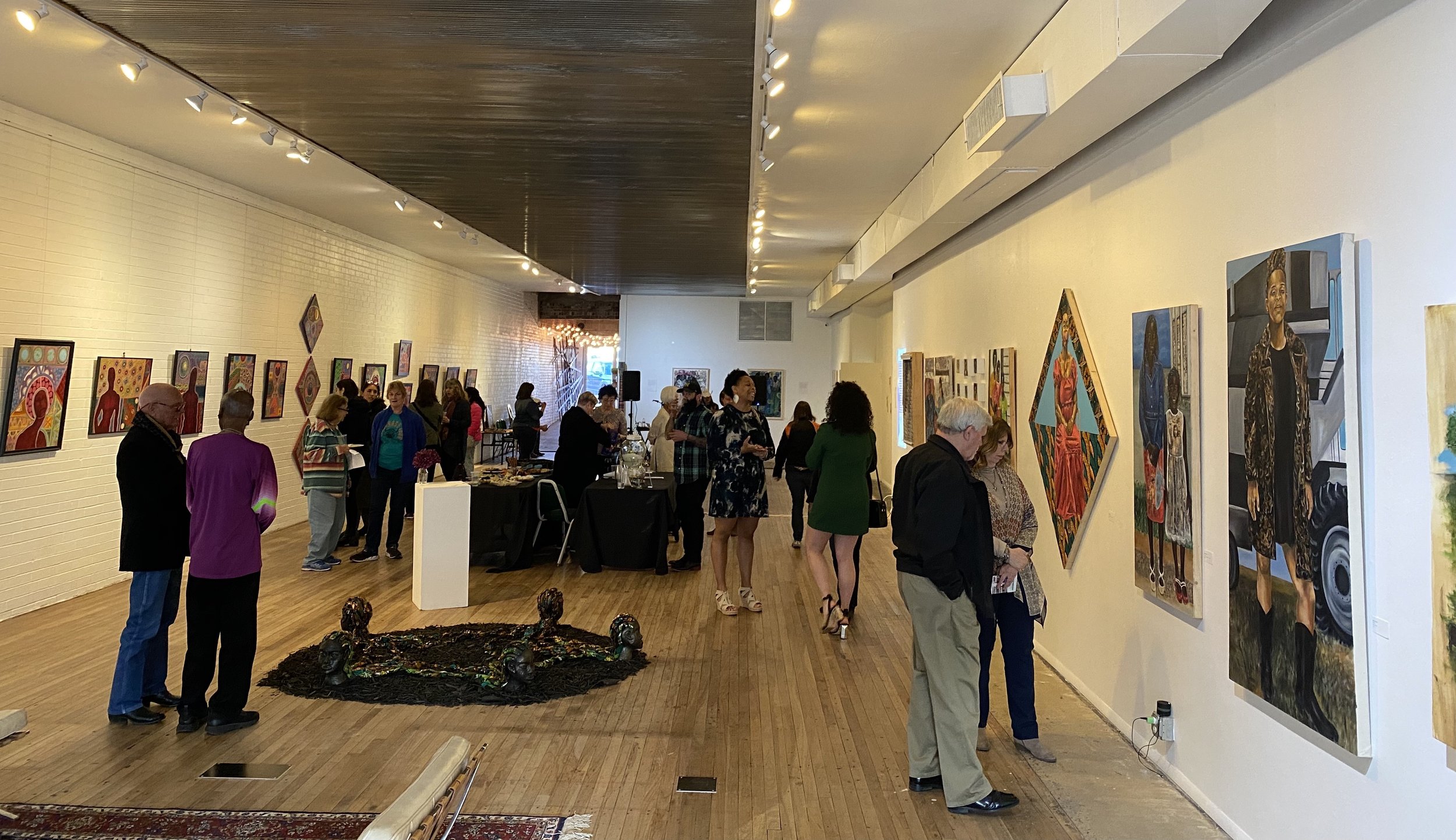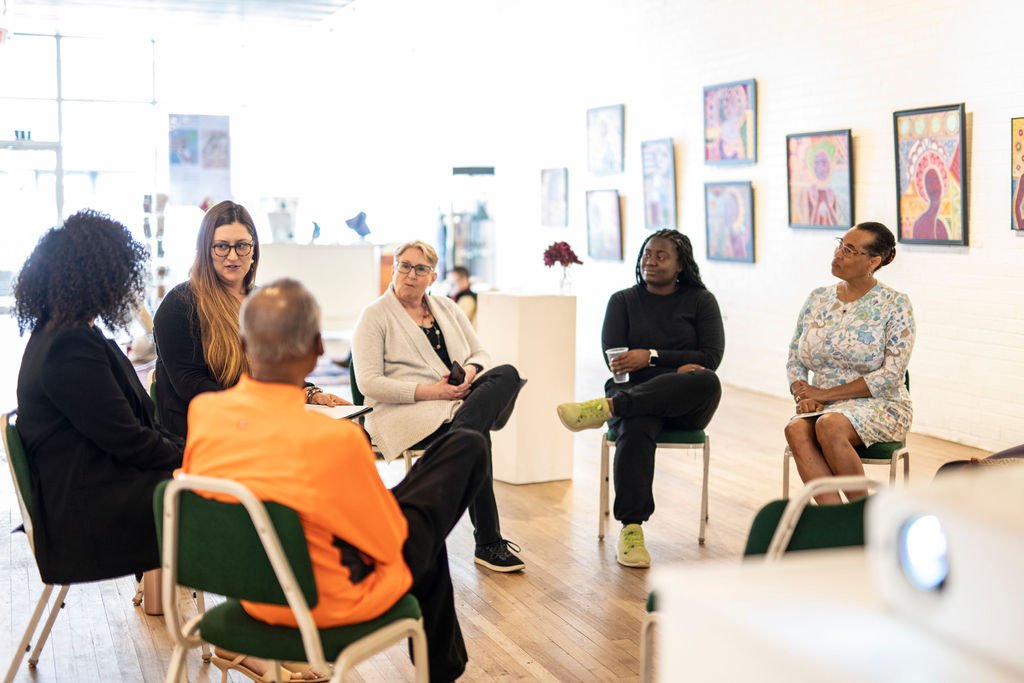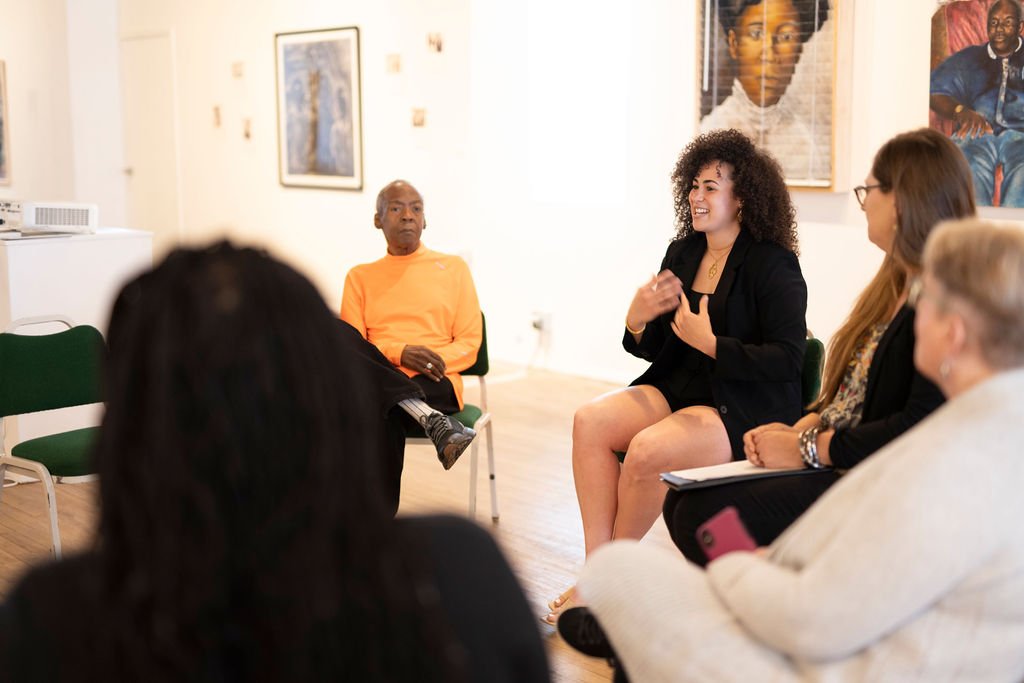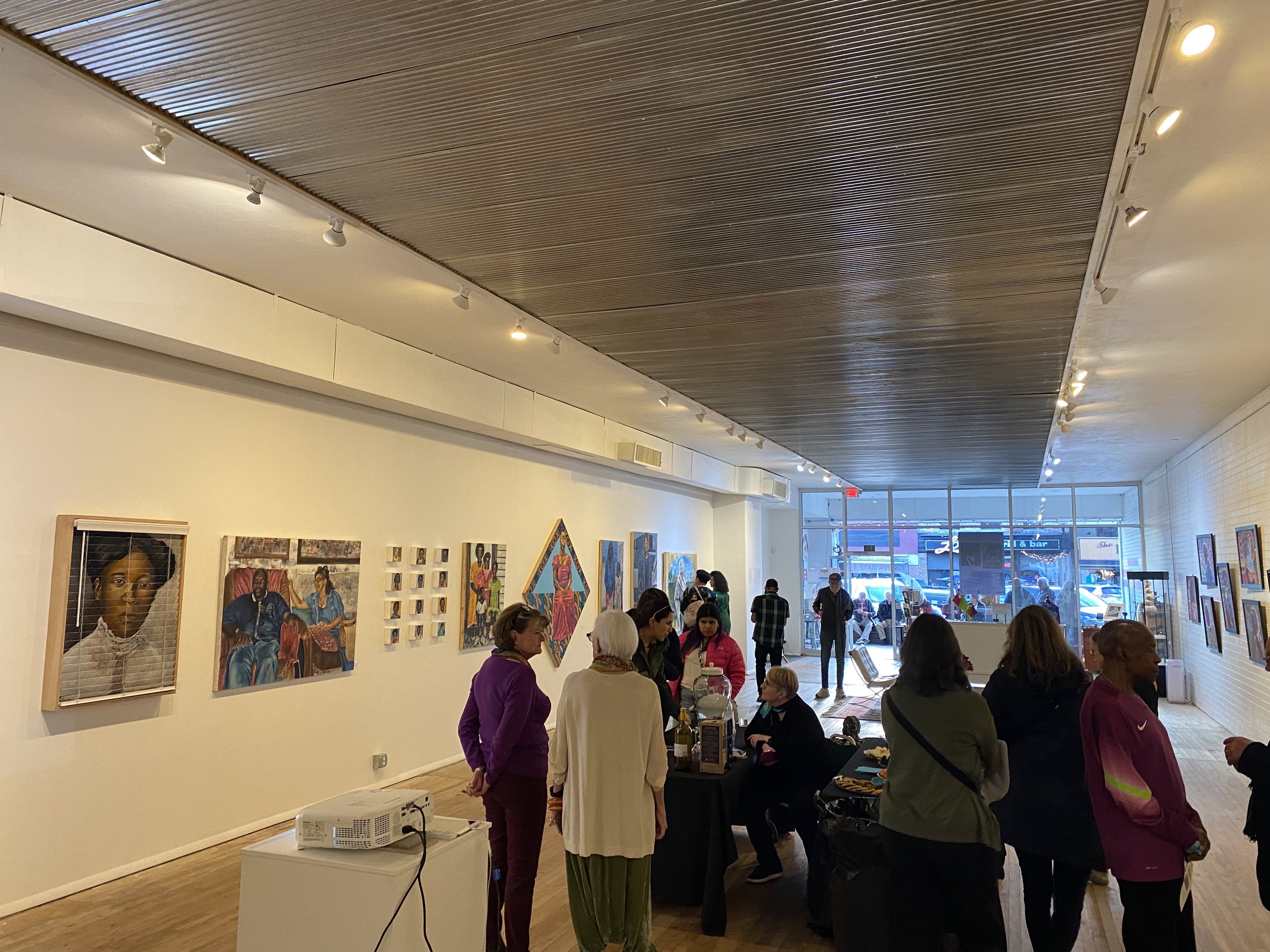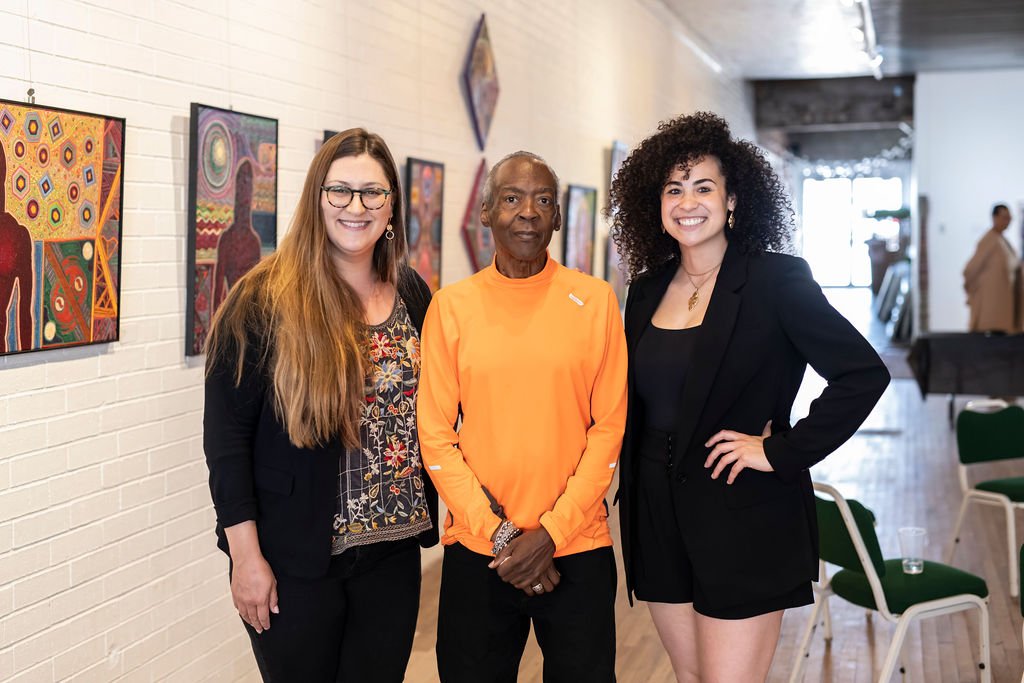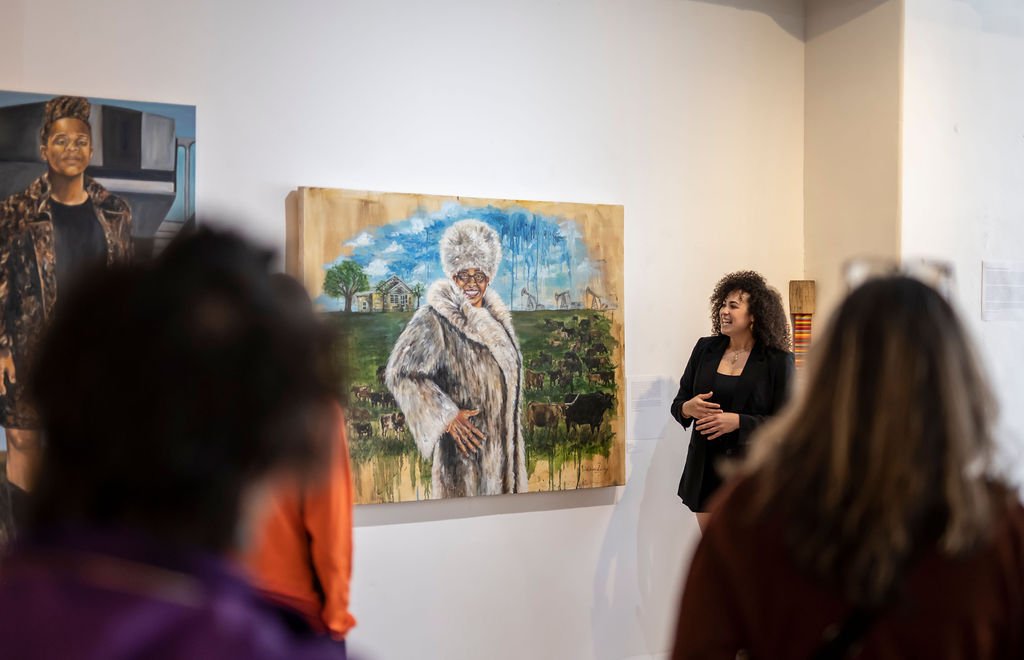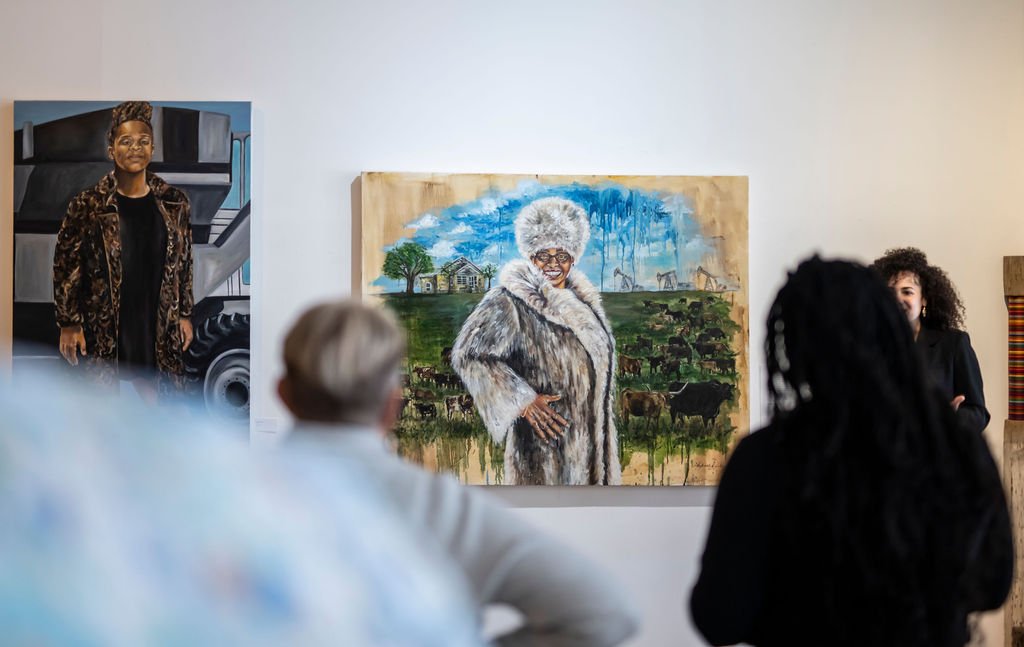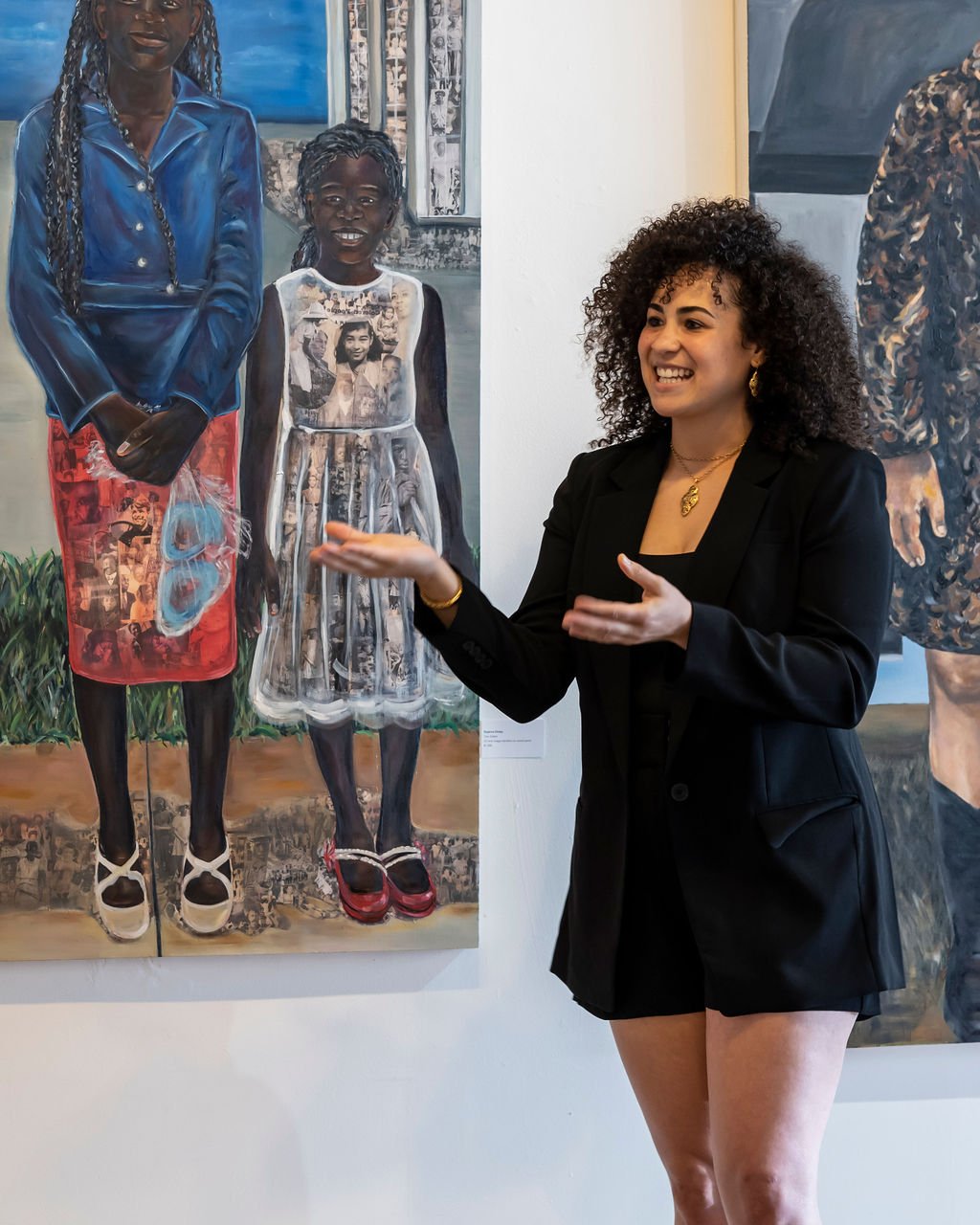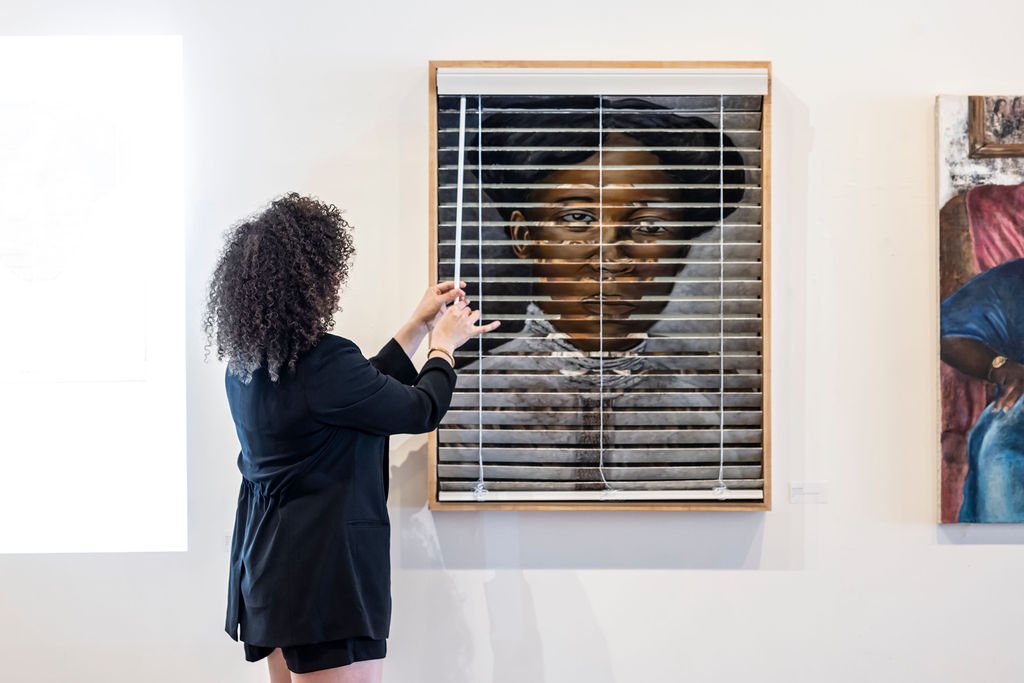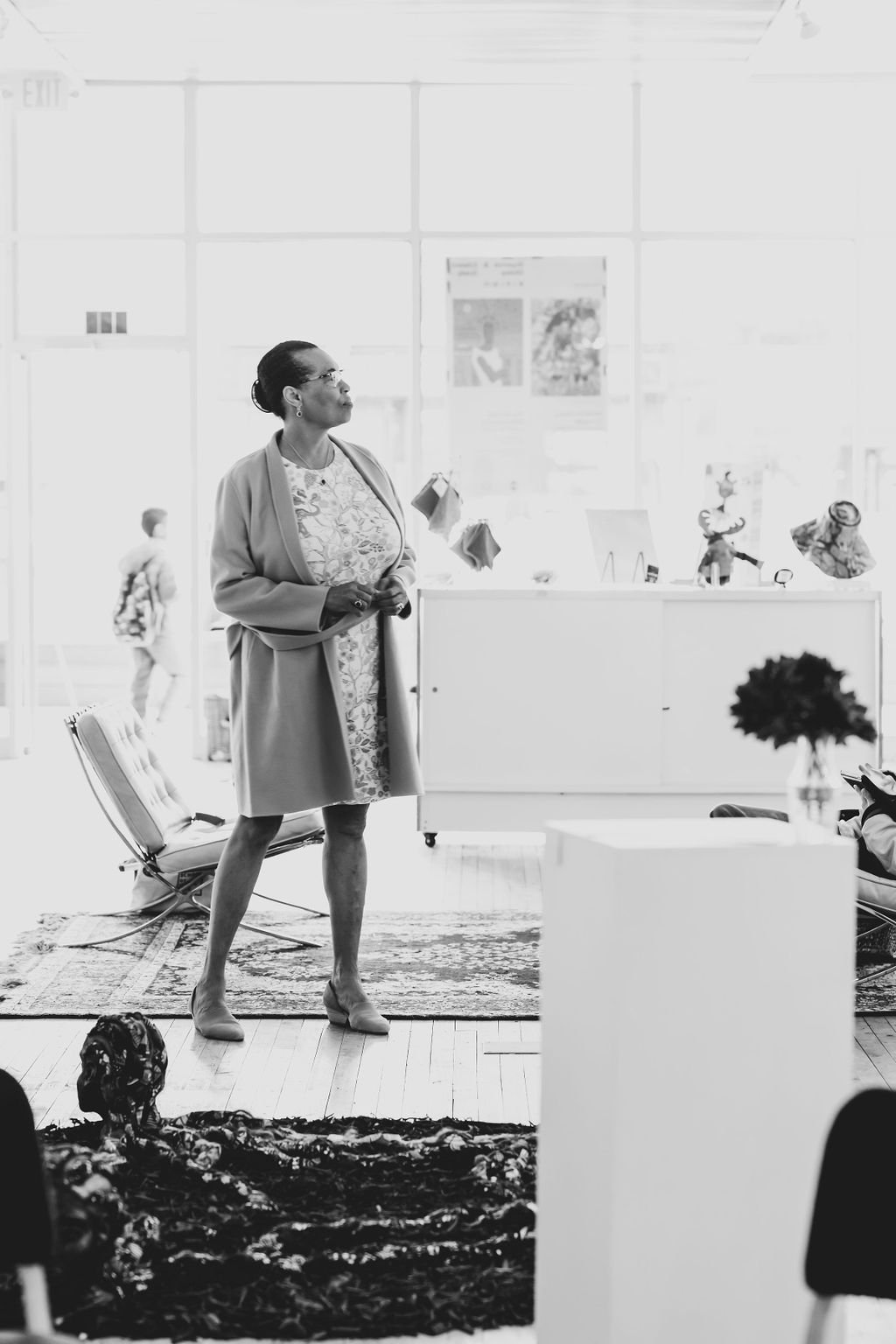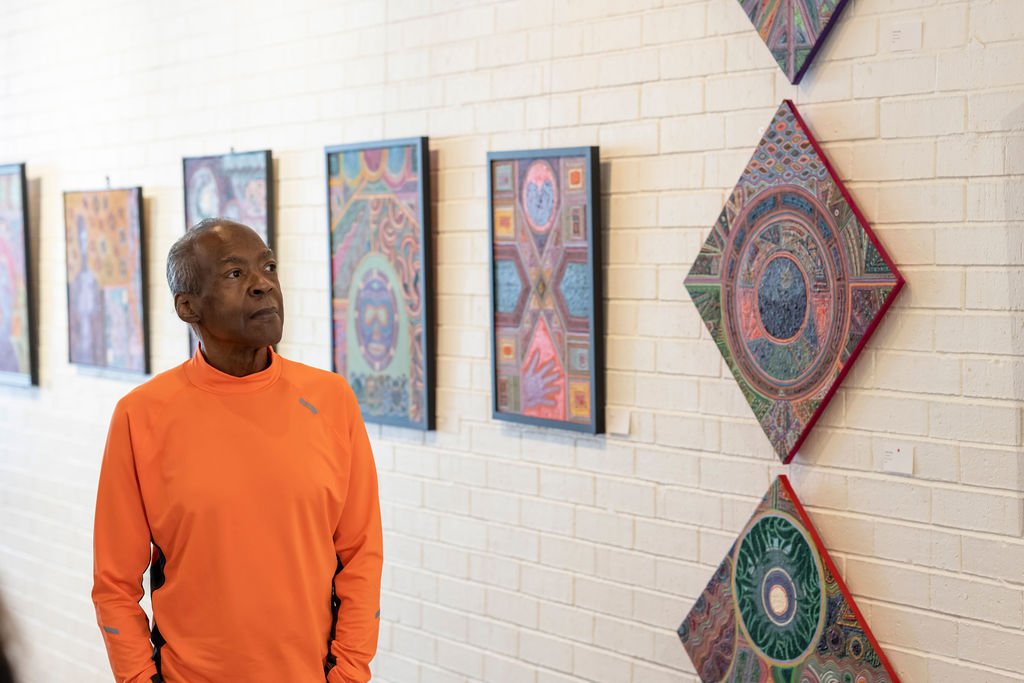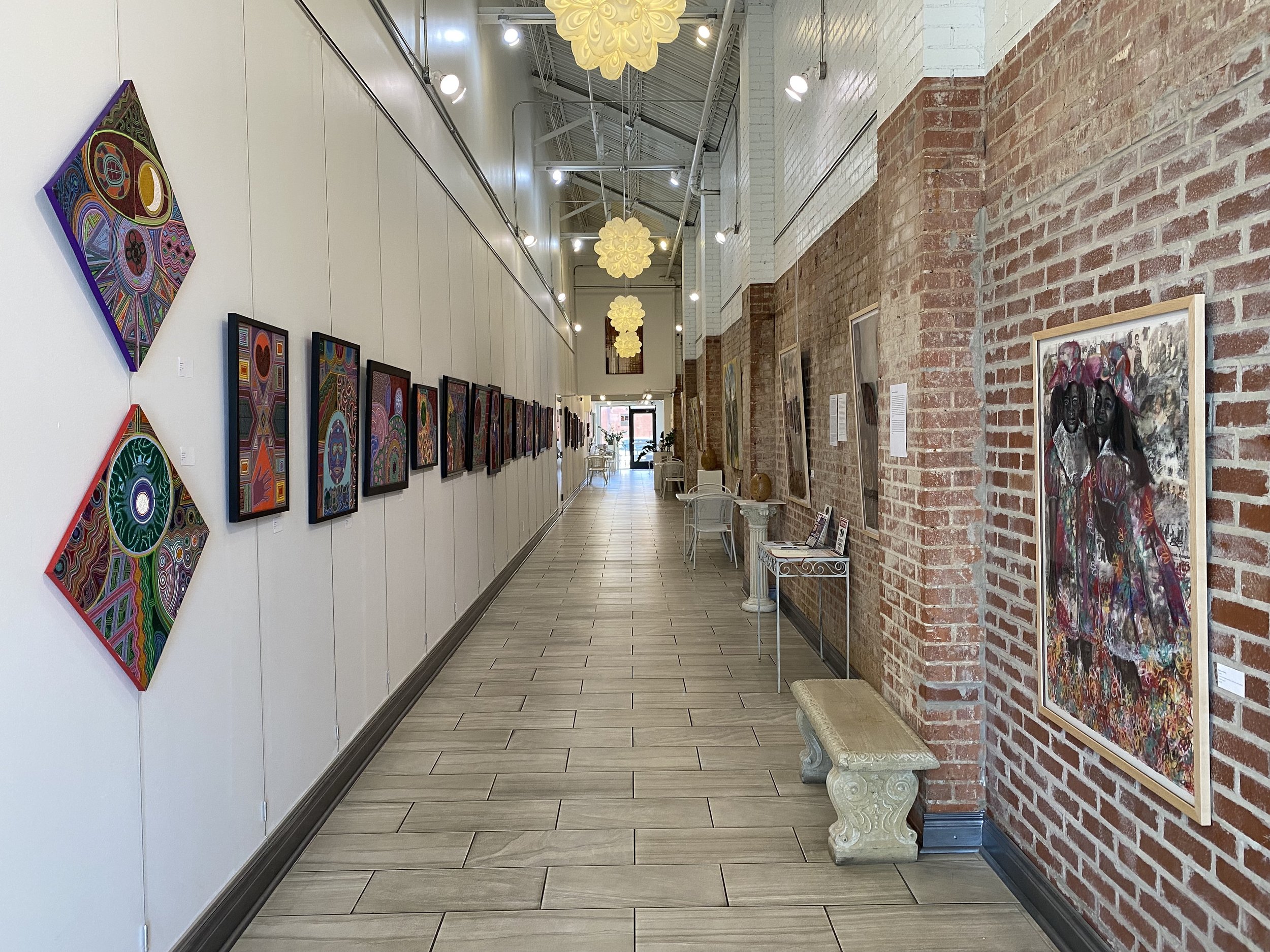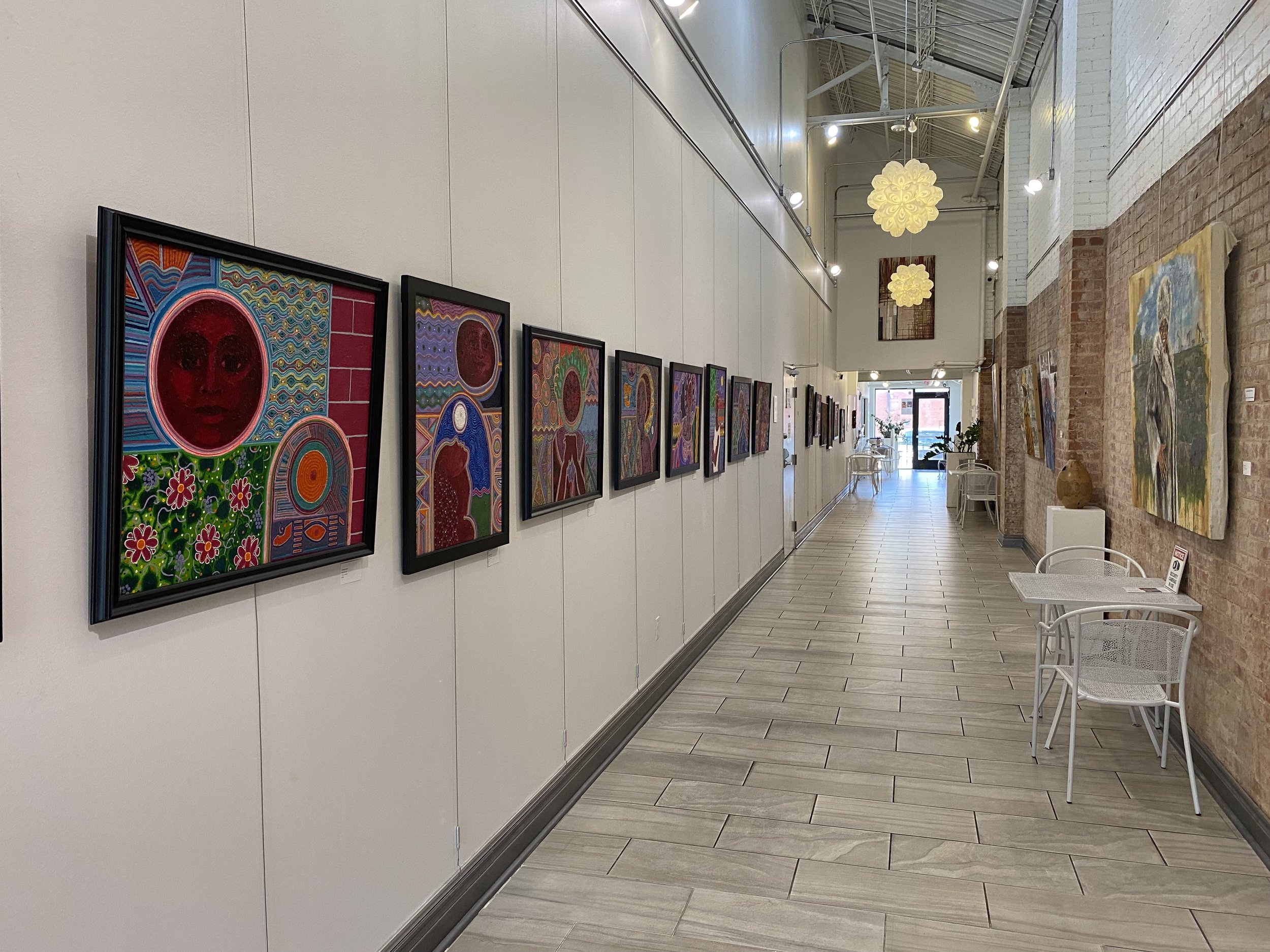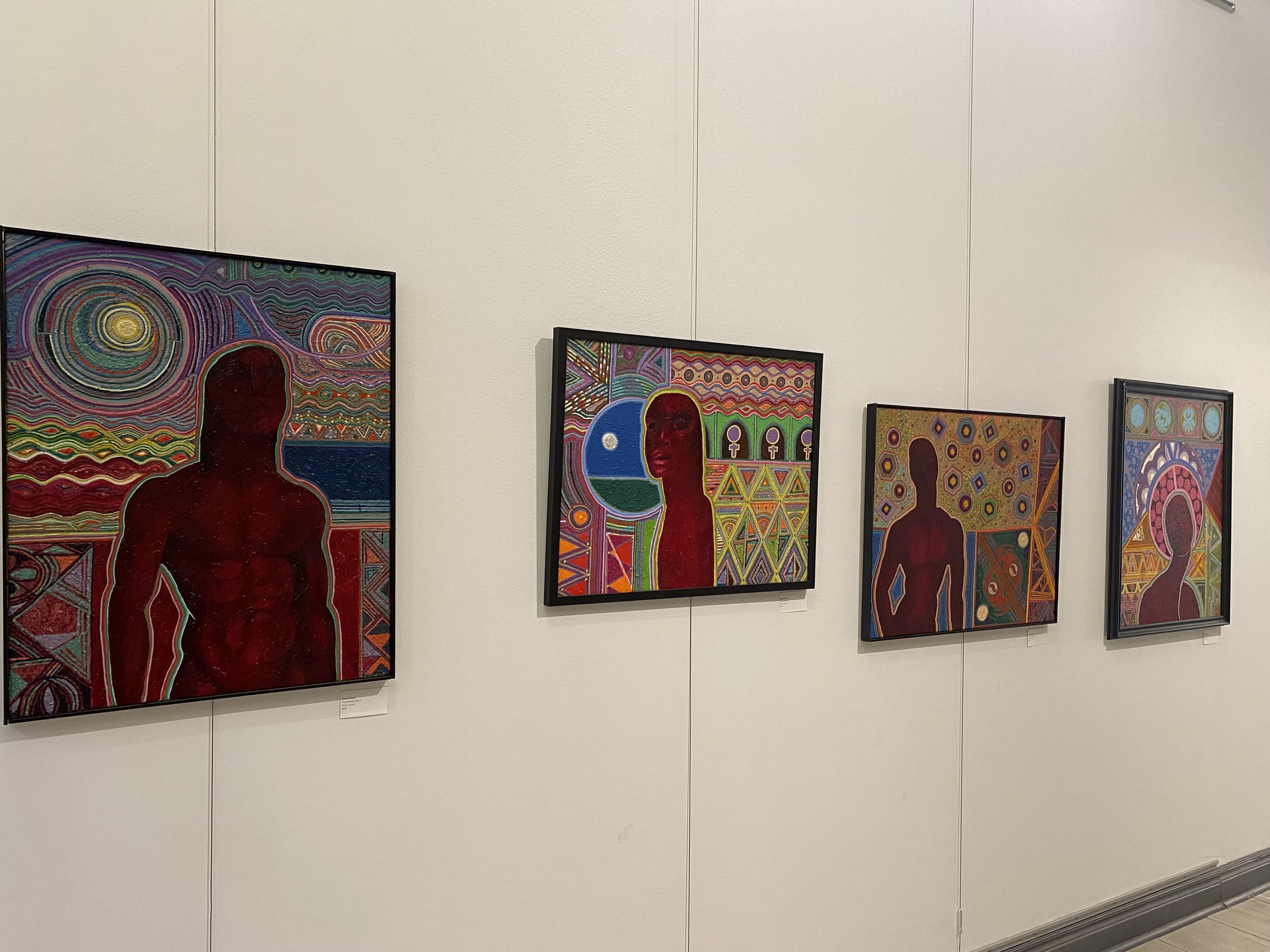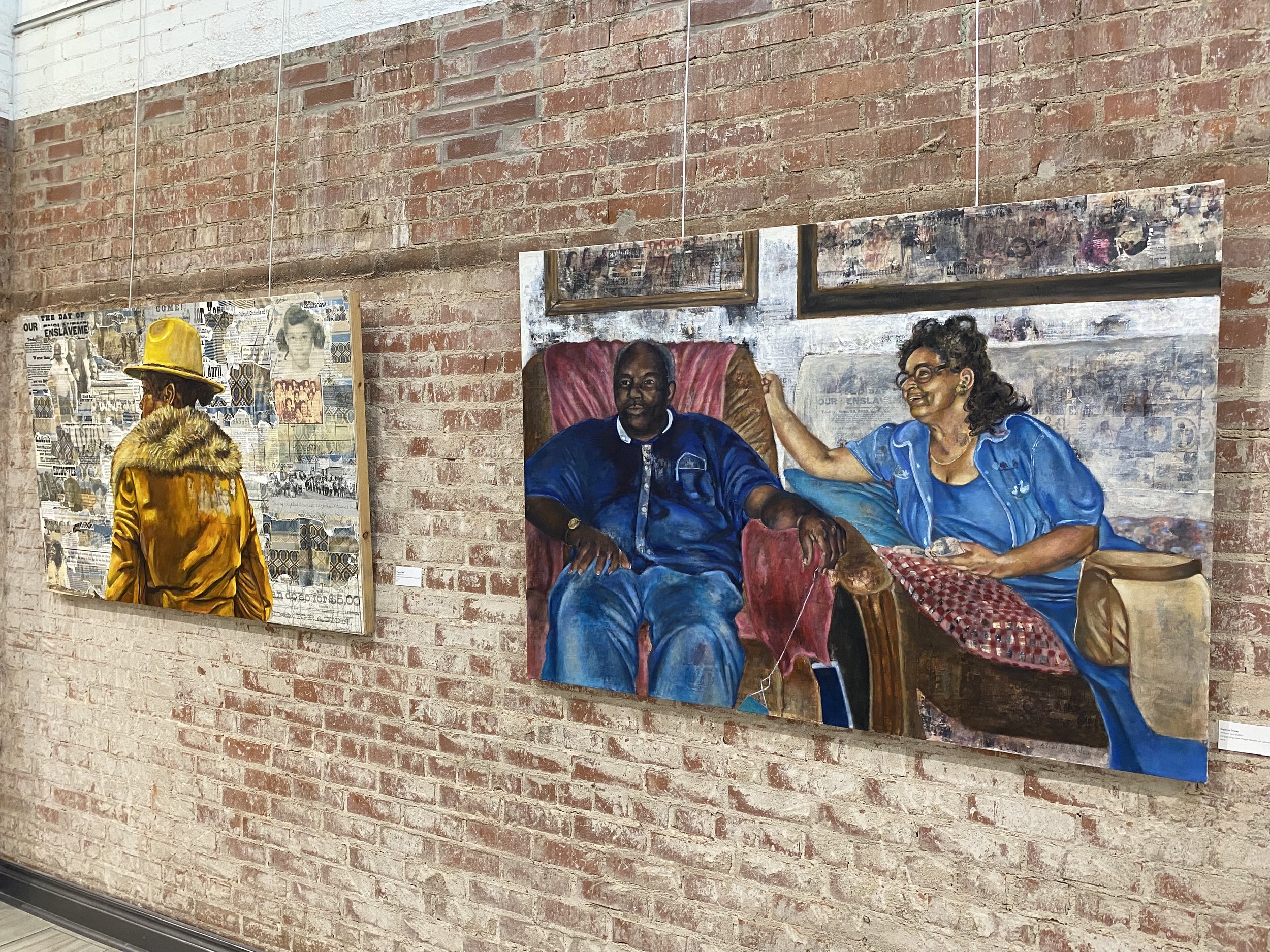Shyanne Dickey & Edward Grady: Rising
Modella Gallery, Stillwater, March 9 - April 22, 2023
The Art Hall, Oklahoma City, April 26 - August 20, 2023
Curated by Helen Opper, this exhibition was supported in part by the Oklahoma Visual Art Coalition’s Thrive Grants program, a regranting program of the Andy Warhol Foundation for the Visual Arts. Rising took place at Modella Gallery in Stillwater, March 9 - April 22, and at The Art Hall, Oklahoma City, April 26 - August 20, 2023. Each iteration of the exhibition was accompanied by two events:
Modella Art Gallery Opening Reception: March 17, 5-7pm
Modella Artist Talk: April 15, 2-4pm
The Art Hall Opening Reception: May 5, 5-8pm
The Art Hall Artist Demonstration/Workshop: June 24, 2-4pm
From the Exhibition’s Curatorial Statement:
This exhibition pairs the work of two Oklahoma-based artists, Shyanne Dickey and Edward Grady, for a two-part exhibition at Modella Gallery in Stillwater and The Art Hall in Oklahoma City. Dickey and Grady make artwork that explores their cultural and personal influences, honors strong women and matrilineal heritages, and celebrates Black identity. Through her mixed media paintings incorporating archival imagery, Dickey examines her own family’s history and that of other African American “Exodusters”, families who settled in the farmland of Kansas after the Civil War. By sharing these stories with the public, Dickey helps uncover a little-known part of American and African American history – one that empowered many Black freedmen and their families, but which was not without significant challenges. Grady’s vibrantly colored, textured, and intricately patterned paintings of Black women, men, and masks are informed by his relationship to African cultures and art forms, his interest in symbolism, fashion, and design, and a career’s worth of art education and curatorial work within Black communities in Oklahoma and elsewhere. The commanding, powerful presence of his figures and their emboldened, direct gazes demonstrate that his subjects are not afraid to take up space and visually proclaim their cultural identity. Each of these artists adapts figuration to reflect their own voices and artistic practices, empowering themselves and those who view the artwork.
My goals for this exhibition are manifold. By showing Dickey’s and Grady’s paintings together, I aim to contribute to the diversity of artistic voices being shown in the state of Oklahoma and to highlight aesthetic and conceptual connections and points of comparison between the two artists’ work. Exhibiting work by two artists from different backgrounds, birthplaces, and generations, but with some shared cultural heritage, expands the type of art viewing experiences available to the public to be both inclusive and diverse. Ultimately, by showing figurative work made by Black artists, I hope to contribute to the rectification of historical inaccuracies and omissions entrenched within and propagated by the traditional Western art historical canon. In a conversation about exhibiting figurative work by Black artists between herself and curator Katy Hessel, the Black artist and portrait painter Amy Sherald explained that it is inherently political to show artwork by artists who have historically and categorically been denied entrance to larger artistic platforms and to this canon. Likewise, it is automatically a political act to show artwork depicting Black people, a subject systemically denied by and to traditional art history. If the community can be reflected within the art it sees, does that empower the community? It is my hope that yes, it does. Showing this kind of artwork serves as a way to keep cultural, familial, and personal stories vital and explores new ways to tell different stories. Beyond the political, I hope that this exhibition demonstrates how art can be a tool for storytelling and a means to open up conversations towards the healing of past trauma.
When working on any exhibition, it is the curator’s responsibility to honor the artists’ personal and artistic identities and their artistic voices. As the curator of this multi-faceted project, I believe the work speaks for itself and that the audience does not need me, who comes from a different cultural background than the artists, to explain what the artwork means. By learning about the personal histories of another’s family, maybe you will be inspired to learn about your own. By seeing beautiful depictions of figures from either your own or a different culture, perhaps you will want to connect more deeply to your own culture’s artistry and heritage. Thank you for considering these ideas as you engage with the artworks.
Below are installation images from Modella Gallery, courtesy Opper Fine Art/Alice Wimberly.
Below are event photos from Modella Gallery’s opening reception and artist talk, courtesy of Opper Fine Art and Alexis Austin of SoPhoto. Photos from The Art Hall events can be found on The Art Hall’s website.
Below are installation images from The Art Hall, courtesy Opper Fine Art.
Beautiful design work by Professor Barry Roseman, University of Oklahoma.



